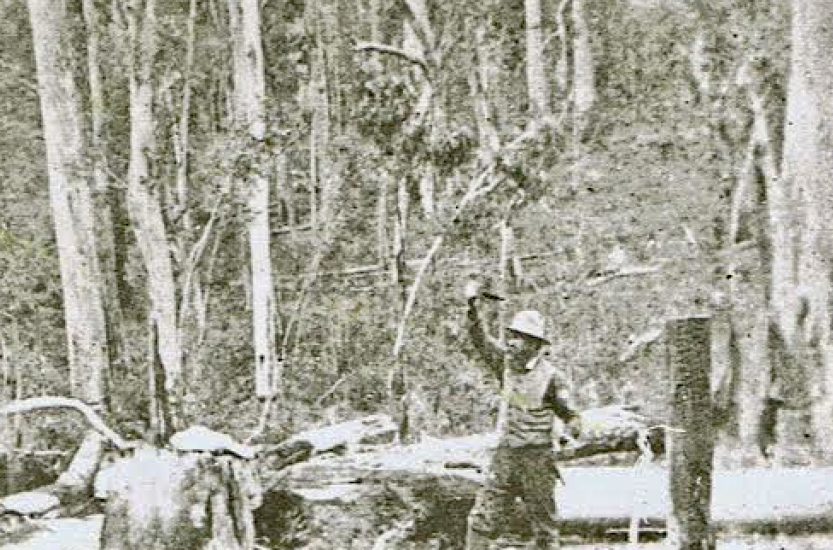So lets just review where we have got to so far:
Ive discovered that my cause hasn’t been helped by the fact that images that look sharp on my 13″ MacBook Pro look a lot less sharp when seen on larger desktop screens, but the discussions about the post-and-rail fences is worth revisiting because it illustrates my other main point, which is that there is often more than one credible interpretation of what can be seen in them. Ive posted another close-up of that area above : I hope it is as clear on bigger screens as it is on mine.
I am as certain as I can be that what the KTG say are the rails of post-and-rail fences are actually slender saplings lying roughly parallel to each other at varying distances up a slope. Its quite obvious there are many exactly similar sized saplings standing up on that slope and some others are bending and leaning across to the right side. Imagine how those ones will look once they fall over completely : they will look exactly like the ‘rails’ of the fences. The ‘posts’ of the fences project well up above the ‘rails’ and well below them in some cases, and between them in others – not at all what you expect to see in a post-and-rail fence. The ‘posts’ are in fact other saplings and thin trees projecting upwards and creating the appearance of a grid, like a post-and-rail fence.
So yes, I can see what others are looking at, and think they are seeing post-and-rail fences, but I am certain they are mistaken.
Here is something I posted to the KTG Facebook page a couple of days ago, that they haven’t responded to – so I am asking it again here:
“I am not asking you to agree with my view but with the idea that for all of these things that you claim, other explanations are possible. I think you should also agree that it cant be valid to make a case based on things that aren’t actually seen – such as one trunk hidden behind another.
So I would like to know if you are certain that no other interpretation of those lines is possible other than that they ARE a post-and -rail fence, that there is no other possible explanation of where that short glimpse of a branch goes other than to the trunk of PC1 even though the connection isn’t actually visible , that there is no other possible explanation of the ‘pixelated’ area than that it is a shrub, that no other explanation is possible for the ‘starburst effect’ than that it belongs to a tree 72 yards away, that there is no other explanation possible for PC2 other than that it has two trunks even though they cant be seen….”

I thought it appropriate to post my explanation why the KTG team may have seen a Post & Rail fence in the Burman photo1. Its well known that dots (called rasters) forming a printed photo can look pretty good in a quality printed book like Keith McMenony’s –Ned Kelly ed 2001. But once these images are scanned by another systems having smaller or larger pixels the two systems of dots clash overlapping creating interference patterns.
I will explain how the KTG team have fallen for the trap of seeing things that are the result of pixelisation.
See my You Tube video, its a pretty well off the cuff unprofessional production but consider I’m talking direct to you with sputters ums and ahs.
https://youtu.be/30n4_eh1lG0
To see a critique of the Kennedy Tree Group report see this my webpage with lots of images
http://www.ironicon.com.au/de-fencing-the-ktg-report.htm